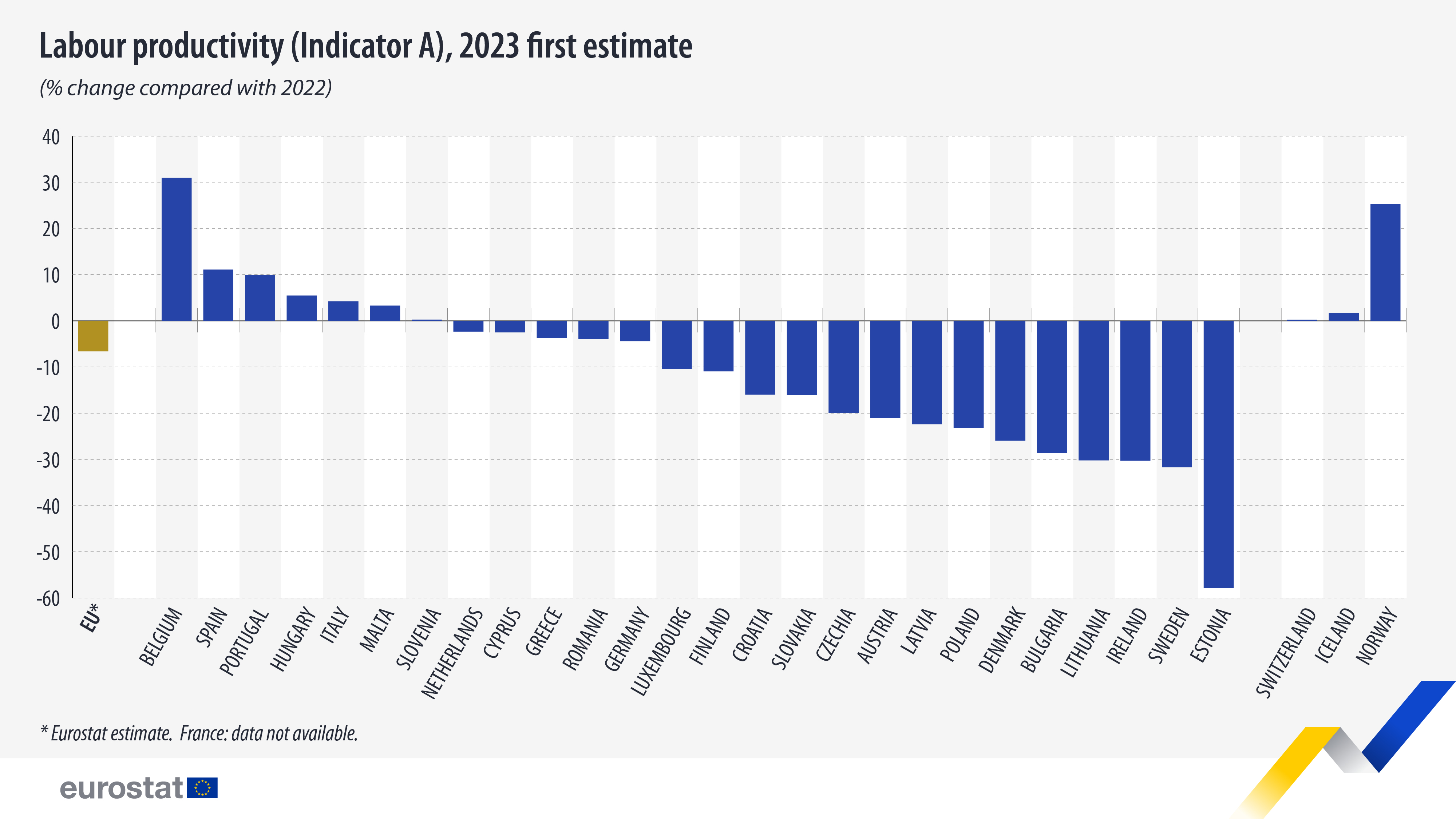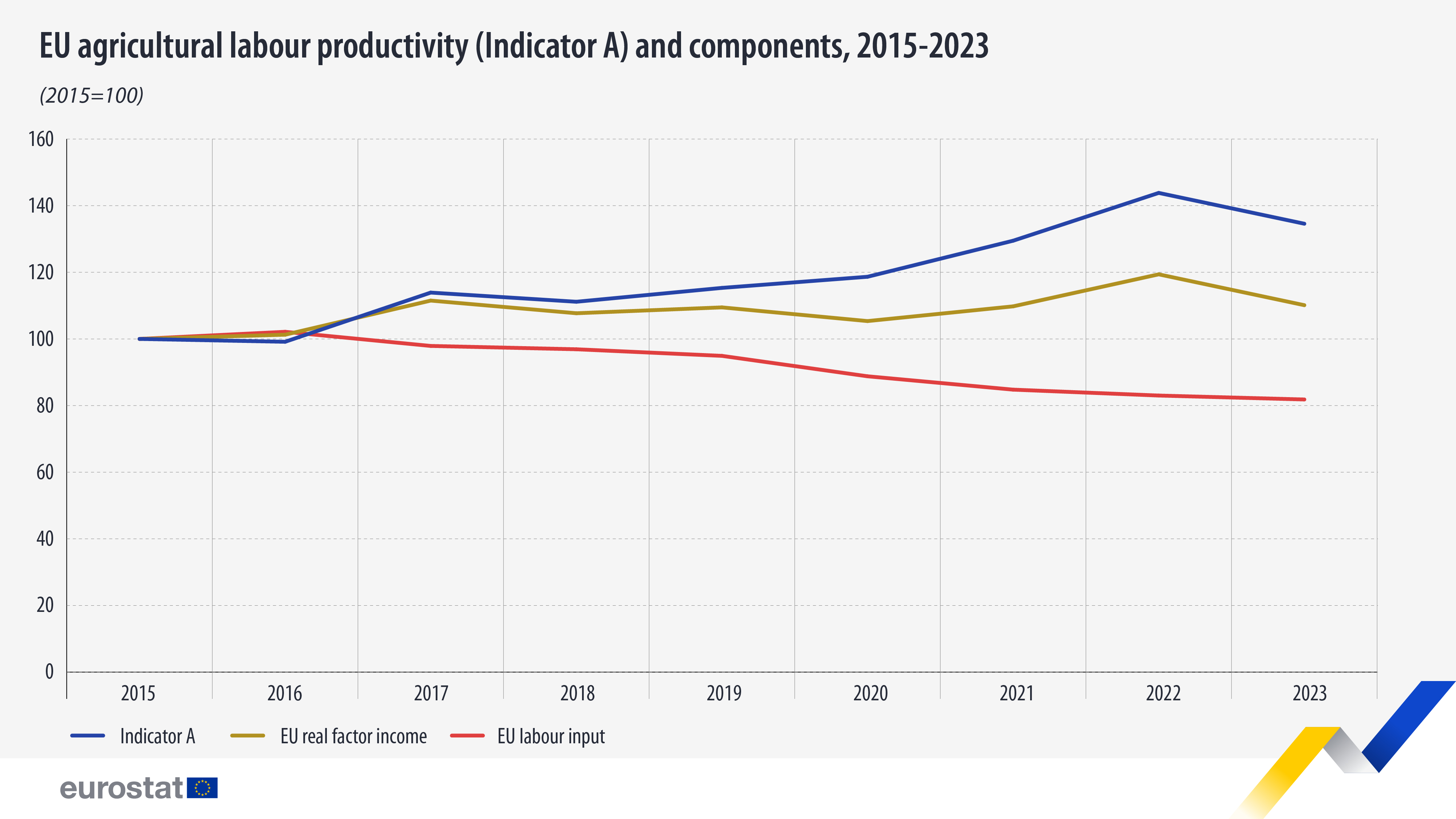EU’s agricultural labour productivity down by 7% in 2023

According to the first preliminary data for 2023 from the economic accounts for agriculture (EAA), the index of agricultural labour productivity in the EU is estimated to have decreased year-on-year by 6.6%, after growth between 2019 and 2022. This downturn was underpinned by a 7.9% decrease in the real value of the income generated by units engaged in agricultural production activities (factor income) and a further reduction (-1.4%) in the volume of agricultural labour (as measured by annual work units, representing full-time labour equivalents).
This information comes from data on agriculture published by Eurostat today.
Most EU countries (19) registered lower agricultural labour productivity in 2023 (as measured by the index of the real income of factors in agriculture per annual work unit). The steepest rates of decline were for Estonia (-57.9%), Sweden (-31.7%), Ireland (-30.3%), Lithuania (-30.2%) and Bulgaria (-28.6%).
Nevertheless, there were higher levels in 7 EU countries; the sharpest rate of increase was in Belgium (+31.0%), followed by Spain (+11.1%), Portugal (+9.9%), Hungary (+5.5%), Italy (+4.2%), Malta (+3.3%) and Slovenia (+0.3%). These increases were due to lower prices of fertilisers and input and higher prices of products in which these countries are specialised, such as olive oil, potatoes or swine.
Source dataset: aact_eaa06
The gross value added by the EU's agricultural industry, which is the difference between the value of agricultural output and the costs of the services and goods used in the production process (intermediate consumption), held relatively steady (+0.9%) in 2023 after a sharp rise (+15.1%) in 2022. In turn, this reflected prices that remained relatively unchanged after strong growth in 2021 and 2022, both for output (+0.5%) and intermediate consumption (-0.9%), as well as volumes that were down only slightly for output (-1.0%) and intermediate consumption (-0.6%).
EU agricultural labour productivity 35% higher in 2023 than in 2015
Despite the downturn in 2023, the index level of EU real factor income in 2023 remained 10.1% higher than in 2015. This income was nominally shared among a much smaller amount of labour; the index of agricultural labour input declined by 18.2% over the same period. Together, these changes resulted in EU agricultural labour productivity (Indicator A) being 34.6% higher in 2023 than in 2015, despite the estimated downturn in 2023.
Source datasets: aact_eaa05, aact_eaa06 and aact_ali02
For more information
- Thematic section of agriculture statistics
- Database of agriculture statistics
- Key figures on the European food chain - 2023 edition
Methodological notes
- All data are estimates. EU aggregates in this News Item are Eurostat estimates made for the purpose of this publication. Data are unavailable for France.
- These first estimates of the EAA are compiled from the partial information available. The data for the 2023 EAA will be revised and published on 15 May 2024.
- The labour productivity of the agricultural industry can be measured as factor income expressed per full-time labour equivalent. This measures the remuneration of all factors of production (land, capital, labour) by the equivalent of each full-time worker in the agricultural industry, presented in real terms (adjusted for inflation) and expressed as an index.
- Agricultural labour productivity should not be confused with the total income of farming households or the income of a person working in agriculture.
If you have any queries, please visit our contact us page.


